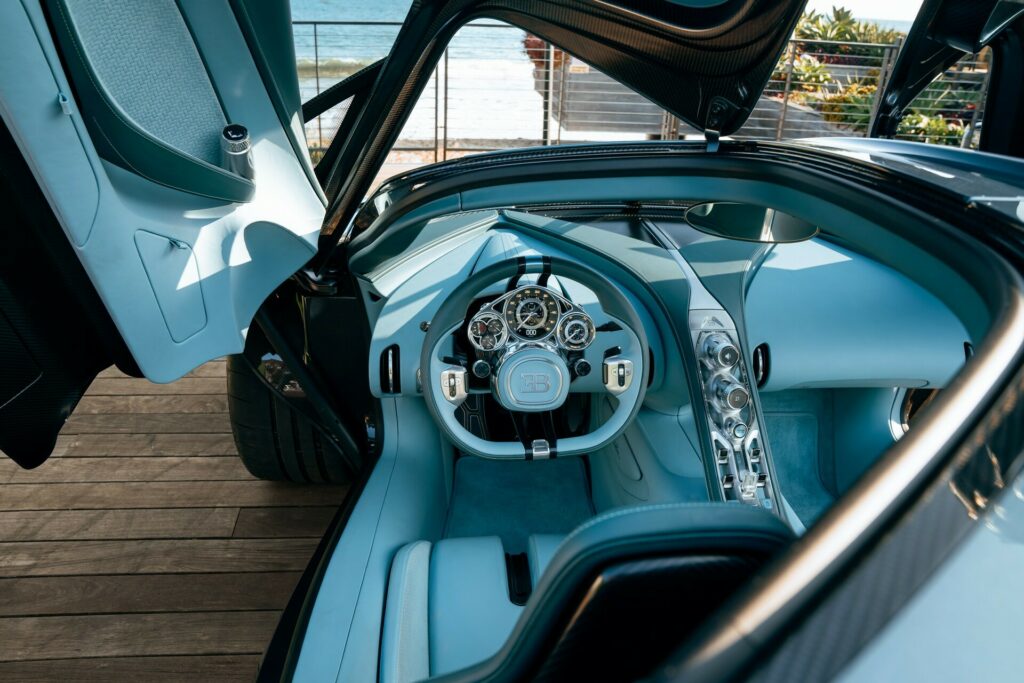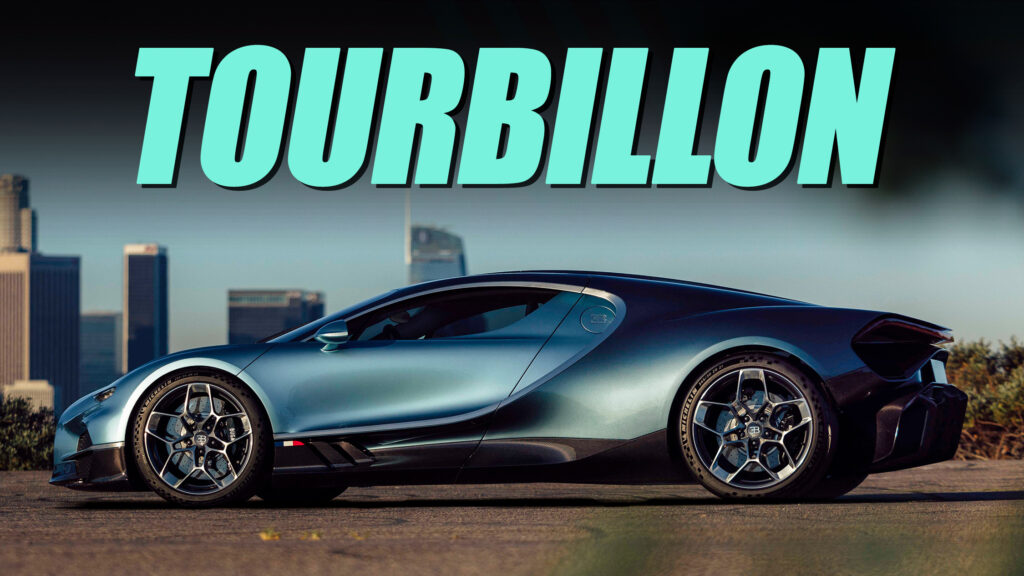- Bugatti embarked on a little road trip with the hypercar after its Monterey Car Week premiere.
- Powering the Chiron’s successor is an 8.3-liter naturally-aspirated V16 and three electric motors.
- The new car delivers 1,775 hp and should hit 248 mph in less than 25 seconds.
The United States will undoubtedly prove to be one of the most important markets for the Bugatti Tourbillon hypercar, so it’s little surprise that the French brand brought it to local shores so soon after its online debut.
Americans were provided their first look at the new car during Monterey Car Week before Bugatti took the Tourbillon on a short road trip across Southern California from Beverly Hills to Newport Beach. In just a couple of years’ time, those fortunate enough to have secured an allocation will soon be able to do the same.
Read: Bugatti Originally Wanted A New W16 Before Convinced To Go With The V16
The Bugatti’s journey started on the Pacific Coast Highway and included a stop at the Bugatti Beverly Hills dealerships. It was then moved to Nobu Los Angeles for an exclusive event and Soho House in West Hollywood, providing wealthy clients with ample time to check it out in person. The V16-powered monster then showed up in Newport Beach and was presented at a special Super Car Show hosted by Bugatti Newport Beach.
After its U.S. adventures, the Tourbillon returned to France and will be readied for a presentation at the exclusive Chantilly Arts & Elegance Richard Mille running from 12-15 September.

In replacing the iconic Chiron, Bugatti decided against retaining its fabled 8.0-liter quad-turbocharged W16 and has gone down a different path. It has tapped Cosworth to develop a new 8.3-liter naturally-aspirated V16 for the car which revs to a dizzying 9,000 rpm and produces 986 hp. Supplementing this engine are three electric motors that allow the Tourbillon to deliver a combined 1,775 hp. It’ll be able to hit 62 mph (100 km/h) in less than 2 seconds, 124 mph (200 km/h) in under 5 seconds, 186 mph (300 km/h) in fewer than 10 seconds, and storm to over 248 mph (400 km/h) in roughly 25 seconds.














